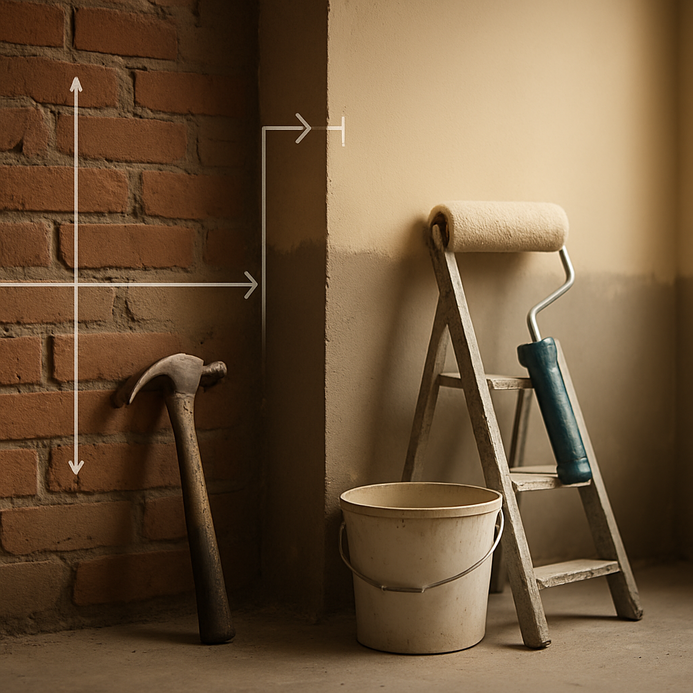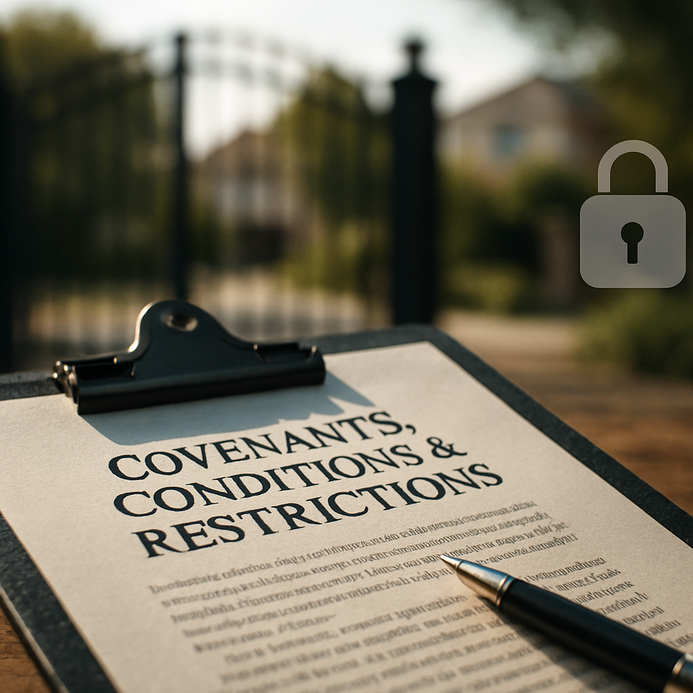Home Loans Made Simple: Why Tripartite Agreements Matter More Than You Think
Understanding the Tripartite Agreement
So, what’s a tripartite agreement? You’d think it’s just a fancy term, but really it’s a vital legal document that involves three parties, super important in sectors like real estate. Picture this: when you’re diving into a home loan for a place that’s still sprouting from the ground, you’ve got the buyer, the builder, and the lender all at play. Each of them has their own gig, making sure everyone’s interests are snugly protected throughout the ordeal.
Tripartite Agreement Meaning
At its core, the tripartite agreement meaning is all about teamwork and making sure everyone benefits. It lays out how everyone’s gonna work together. Here’s a quick breakdown:
| Party | Role |
| Buyer | Snatches up the property, making payments as per the laid-down rules. |
| Builder | Gets the job done on the property, sticking to specs and deadlines. |
| Lender | Dishes out the cash, making sure the payments are covered by the property. |
It’s a win-win. The buyer gets their dream property, the builder gets paid, and the lender has a safety net with the property acting as collateral for the loan.
Why a Tripartite Agreement is Important for Under-Construction Properties
Now, a tripartite agreement format needs to cover all bases, like a safety net for everyone involved. It’s a lifesaver for buyers, shielding them from construction delays or if what’s being built isn’t up to snuff. Plus, this agreement hooks up the payment schedules with the construction milestones, urging the builder to keep things moving.
And let’s be honest, if things go south, having a legally binding document can really cut down on disputes about loans, quality, or deadlines. You don’t want surprises when big bucks are on the line in real estate.
For more nitty-gritty, check out the article on the importance of tripartite agreements in property transactions. And if your project hits a wall, dive into our guide on RERA implications for buyers.
In short, if you’re eyeing a home loan for that shiny new under-construction pad, getting a grip on a tripartite agreement is a must, it’s your shield and sword in this adventure.
The Role of the Tripartite Agreement in Home Loans
So, let’s talk home loans. A tripartite agreement is what you need to secure funding for homes that aren’t quite finished yet. That’s the buyer, the builder, and your bank stepping in to map out the financial journey and keep everyone safe.
Tripartite Agreement Meaning and Importance
The crux of the tripartite agreement meaning is about crafting a secure setup within real estate dealings. For buyers, it means their money is in good hands. For builders, it’s about ensuring that the cash flow keeps things rolling, and for banks, it’s clarity on lending terms and conditions.
This agreement smooths out the loan approval process while keeping things clear about who owes what to whom. It makes sure builders hit their timelines, keeping the buyer’s investment secure. If the builder drops the ball, the buyer can pull back their invested funds from the bank, upping their safety.
Tripartite Agreement Format
Now, if you’re wondering what a proper tripartite agreement format looks like, here’s the gist:
- Parties Involved: List of the buyer, builder, and bank folks.
- Property Description: Details about the under-construction site.
- Loan Amount: Total approved loan and how it’ll be disbursed.
- Responsibilities: What each party’s gotta do.
- Default Clauses: What happens if things go awry.
- Governing Laws: The legal backdrop steering the agreement.
Here’s a sneak peek of how it might be structured:
| Component | Details |
| Parties | Buyer, Builder, Bank |
| Property | Description and location of the property |
| Loan Amount | Total amount and release schedule |
| Responsibilities | Obligations of the buyer and builder |
| Default Clauses | Conditions for addressing defaults |
| Governing Laws | Jurisdiction and applicable legal framework |
This agreement is key to making transactions smoother for everyone. It gives buyers some peace of mind, while also making lenders feel secure about their risks.
For more insights, take a look at the Tripartite Agreement or delve into this piece called What Is a Tri-Party Agreement and How Is It Used?”.
And let’s not forget: RERA compliance is the cherry on top when it comes to safeguarding your investment. Read our article on RERA and what to do if things stall here.
Disbursement of Funds: Ensuring Blame-Free Construction
Now, let’s get down to brass tacks. A tripartite agreement is crucial in managing how home loans for under-construction properties dish out funds. The buyer, the builder, and the financial institution (usually your friendly bank) are at the heart of this, defining how and when money flows based on construction stages.
Tripartite Agreement Meaning
Simply put, a tripartite agreement makes it crystal clear what each party’s rights and responsibilities are. This clarity slashes down potential disputes and ensures funds get released when specific milestones are hit. For instance, your bank might release cash once the foundation’s laid, then again at the framing or finishing stages. It’s a smart way to keep the construction timeline on track.
Benefits of Tripartite Agreements
- Accountability: Funds are tied to project stages, keeping builders on their toes.
- Risk Mitigation: Buyers can rest easy since the bank holds the purse strings till things are up to par.
- Smoother Transactions: A structured tripartite agreement keeps everyone aligned and resolves issues faster.
Tripartite Agreement Format
A typical tripartite agreement should cover:
- Definitions: Break down what each party and term means.
- Scope of Work: What’s being built, details matter!
- Fund Disbursement Schedule: When and how funds will be released.
- Responsibilities: What each player is accountable for.
- Dispute Resolution: A path forward if things get messy.
| Milestone | Action Required | Funds Disbursed |
| Milestone 1: Foundation | Complete the foundation work | 30% of loan amount |
| Milestone 2: Structure | Finish framework construction | 40% of loan amount |
| Milestone 3: Finishing | Wrap up internal finishes | 30% of loan amount |
A tripartite agreement thus builds transparency in the process, ensuring everyone’s on the same page while aiming for timely project completion. For detailed definitions of tripartite agreements, check out Law Insider.
For more tidbits on related topics, look into our articles on understanding RERA legal options and making sense of real estate investments.
RERA Guidelines and Compliance
The Real Estate (Regulation and Development) Act, or RERA as folks call it, is all about making real estate dealings more transparent and accountable. It really shakes things up when it comes to tripartite agreements involving the buyer, builder, and lender. If you’re a home buyer, getting the scoop on the tripartite agreement meaning within RERA is crucial, especially for loans on under-construction digs.
RERA’s Influence on Tripartite Agreements
RERA makes builders answerable for what they promise, which directly shapes what’s in those tripartite agreements. When you’re securing a loan with an under-construction property, often you’ll find this agreement is a key part of that process. Sticking to RERA rules helps lenders reduce risks and keeps buyers happy.
The tripartite agreement format gets lined up with clear responsibilities and consequences for not playing by the rules. So if the builder misses deadlines, buyers can take it up with authorities under RERA. What’s more, RERA requires builders to register their projects, which adds a layer of credibility and financial stability checks.
Check out this table for compliance aspects under RERA that touch on tripartite agreements:
| Aspect | Description |
| Project Registration | Builders must register projects with RERA to be legit. |
| Advance Payment Limits | No more than 10% upfront before signing the agreement. |
| Delivery Timeline | Clauses must lay out clear delivery schedules, affecting loan conditions. |
| Quality Assurance | Builders need to uphold quality standards set by RERA, raising buyer trust. |
RERA regulations really boost buyer protection, ensuring that tripartite agreements include terms that stick to these standards. Thus, if you’re stepping into a tripartite agreement, don’t forget to give RERA guidelines a good look so your rights are safeguarded.
For more info on what this means for homeowners, you can check out our article. Sticking to compliance within tripartite agreements is a smart move toward a secure investment climate for under-construction properties, making those big purchasing decisions a bit easier.
Crafting Your Tripartite Agreement: Tips and Format
Putting together a tripartite agreement is no small feat. It’s that key document laying out the responsibilities and roles of three different parties in a transaction—especially in real estate. Finally, grasping the tripartite agreement format can really help with the purchase of those under-construction properties.
Essential Components of a Tripartite Agreement Format
| Components | Description |
| Parties Involved | Clearly state the buyer, seller (developer), and lender. |
| Definitions | Establish clear definitions for terms used in the agreement. |
| Obligations | Nail down the obligations of each party. |
| Payment Terms | Break down payment structures, including timelines and due amounts. |
| Dispute Resolution | Outline how disputes will be resolved (think arbitration or mediation). |
| Governing Law | Pin down which laws will govern the agreement. |
Tips for Buyers to Ensure Compliance
- Read Thoroughly: Seriously, go through the agreement line by line, looking for hidden trapdoors.
- Seek Legal Advice: It’s always a smart move to chat with a legal expert to make sure you’re covered.
- Verify All Details: Double-check that all party details, timelines, and financial terms are spot on.
- Regular Updates: Don’t be shy, ask for construction updates and any changes in schedules.
- Negotiate Terms: Speak up! If something feels off, negotiate, everyone’s gotta feel good about the agreement.
Getting yourself familiar with the tripartite agreement meaning and its essential components is key. It can save you in the long run, especially when buying under-construction properties. Want to dive deeper? Check out Law Insider for more insights.
In short, knowing the tripartite agreement format gives you a solid footing when diving into the real estate transaction. And if you’re curious about more real estate agreements, don’t miss our guide on Builder-Buyer Agreements. Let’s make that journey as smooth as possible!
FAQ
- What is a tripartite agreement? A tripartite agreement is a legal document that involves three parties, typically the buyer, builder, and lender, outlining their roles and responsibilities in a transaction.
- Why is a tripartite agreement important for under-construction properties? It protects all parties involved by clearly defining responsibilities and conditions, ensuring smoother transactions and reducing disputes.
- What does RERA stand for? RERA stands for the Real Estate (Regulation and Development) Act, which aims to bring transparency and protect buyer interests in the real estate sector.
- What should be included in a tripartite agreement? Essential components include parties involved, definitions, obligations, payment terms, dispute resolution mechanisms, and governing law.
- How can buyers ensure compliance with the tripartite agreement? Buyers should read thoroughly, seek legal advice, verify details, request updates, and negotiate terms as necessary.













